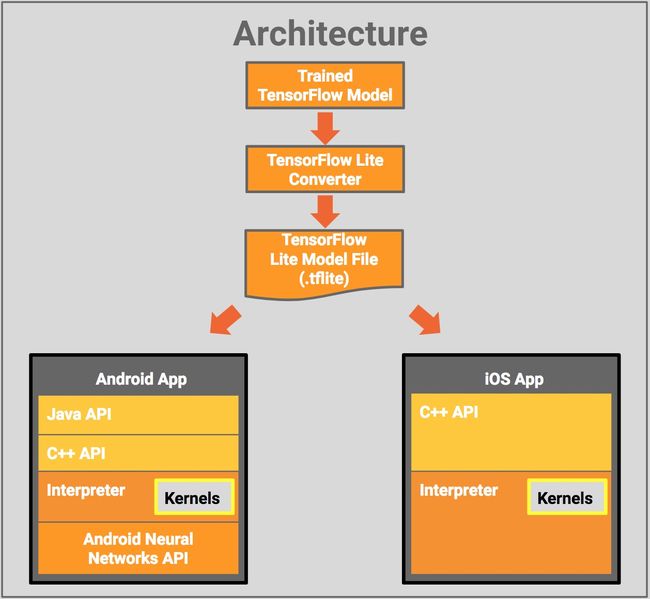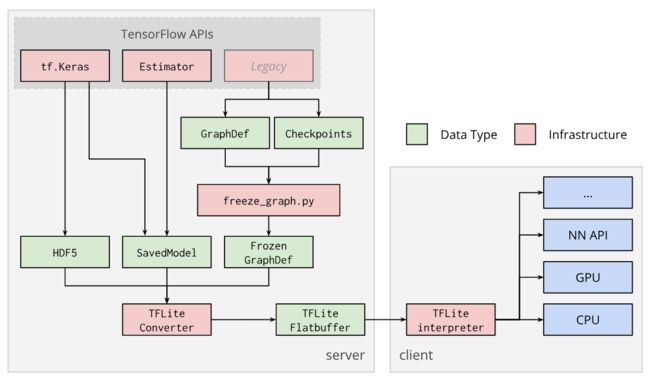- Linux下的socket编程学习(TCP)
小苏同学的脱发日记
linux学习tcp/ip
1.什么是socket?socket的英文翻译就是接口,插座的意思,很形象,就相当于将2台电脑用一根线连起来,线的两头插在不同的电脑上,借此实现通讯的功能。两台电脑通信,实际上是这两台电脑上的某个进程在进行通信。而两个进程进行通信,实际上是往同一个文件中读取数据。2.TCP/IP(3次握手)在tcp/ip协议中,tcp通过三次握手建立起一个tcp的链接,大致如下第一次握手:客户端尝试连接服务器,向
- 大数据开发之Kubernetes篇----安装部署Kubernetes&dashboard
豆豆总
kubernetes
Kubernetes简介由于公司有需要,需要将外后的服务外加Tensorflow模型部署加训练全部集成到k8s上,所以特意记录下这次简单部署的过程。k8s安装部署首先,我们在部署任何大型的组件前都必须要做的事情就是关闭防火墙和设置hostname了vi/etc/hostsk8s001xxx.xxx.xxx.xxk8s002xxx.xxx.xxx.xx...systemctlstopfirewall
- ubuntu20.04 GPU基准测试
爱吃土豆的猫ttt
gpu
目前仅在一种机型尝试环境系统版本(cat/etc/issue)ubuntu20.04gpu数量及型号(lspci|grepNV|grepVGA)02:00.0VGAcompatiblecontroller:NVIDIACorporationDevice2206(reva1)83:00.0VGAcompatiblecontroller:NVIDIACorporationDevice2206(reva
- 【go】Go 语言中 errors.Is 和 errors.As 的区别
还没入门的大菜狗
golang
Go语言中errors.Is和errors.As的区别核心区别概述errors.Is和errors.As是Go1.13引入的错误处理函数,它们有着不同的用途:errors.Is:判断错误链中是否包含特定的错误值(错误相等性检查)errors.As:尝试将错误转换为特定的错误类型(错误类型转换)——基于类型断言机制/类型选择机制详细对比1.功能与目的errors.Is:funcIs(err,targ
- JavaScript松散比较与严格比较
hzw0510
前端开发javascript开发语言ecmascript
在JavaScript中,==(双等号)和===(三等号)都用于比较两个值,但它们的比较方式有显著区别。以下是它们的详细对比:1.==(双等号)名称:松散相等(LooseEquality)行为:在比较之前会尝试进行类型转换,将两个值转换为相同类型后再比较。示例:console.log(5=="5")
- [Unity] GPU动画实现(四)——生成动画数据
Zhidai_
Unityunity动画游戏引擎
目前使用的方法有一个很大缺陷在于基于顶点生成的动画占用的空间很大,一个理想的情况是基于骨骼数据,本文权当抛砖引玉,后续有时间考虑尝试一下基于骨骼数据生成动画。本文内容大量参考自白菊花瓣丶的视频,感谢!生成动画数据需要用到ComputeShader来提高运行的效率,首先在Resources下创建这样一个computeshader,在这里我将其命名为"AnimVertices"。#pragmakern
- python colorama模块失效怎么办_python – 由于模块colorama,无法使用aws CLI
金牛远望号
pythoncolorama模块失效怎么办
我已经安装了AWSCLI,并尝试在MacOSSierra上使用它.它抱怨没有模块colorama:$awsTraceback(mostrecentcalllast):File"/usr/local/bin/aws",line19,inimportawscli.clidriverFile"/Library/Python/2.7/site-packages/awscli/clidriver.py",l
- 如何使用Python实现生成对抗网络(GAN)
「已注销」
互联网前沿技术韩进的创作空间全栈开发知识库python生成对抗网络tensorflow深度学习数据分析
生成对抗网络(GAN)是一种深度学习模型,由两个部分组成:生成器和判别器。生成器负责生成与训练数据相似的新数据,而判别器负责判断输入数据是真实的还是由生成器生成的。这两个部分不断相互博弈,直到生成器能够生成非常逼真的数据,使判别器难以区分生成数据和真实数据。下面是一个简单的Python实现,使用TensorFlow和Keras库。在开始之前,请确保已经安装了TensorFlow和Keras。imp
- android 自定义分辨率,Moonlight Android端自定义分辨率,解决黑边问题
weixin_39661589
android自定义分辨率
更新:使用原版moonlight修改特殊分辨率需要root权限,没有root权限可尝试此版本的moonlight选择当前设备分辨率。再次更新:moonlight9.8版本以上已经支持设置为当前设备分辨率。问题描述本人手机分辨率是2340×1080,在使用moonlight串流时分辨率选择1080p,发现有黑边,此时串流的分辨率为1920×1080。解决方案第一步,调整主机分辨率可以看到,主机实际显
- python网格插值站点_在python中,在二维零网格上两点之间插值一条值线
weixin_39965490
python网格插值站点
TLDR:在2dnumpy数组中找到2个点后,如何在0数组中在它们之间插值一条1行?在上下文:目前我正在尝试从二值化的医学图像数据(0和1)对一个3d数组执行2d操作。最终目标是在填充体素/像素(即第一个和最后一个实例)的起点和终点之间添加一条1s的线。在为此,我使用SimpleITK分割一行,然后将其转换为numpy数组。在其他示例之后,我编写了返回一组数组的函数,这些数组显示填充(1)个像素和
- eclipse运行问题
hitsz_syl
eclipsejavaide
你在D:\Personal_Finance_System\eclipse\eclipse\configuration目录下没有发现.log文件:方法:强制Eclipse生成日志如果.log文件不存在,可以尝试让Eclipse以-consoleLog模式运行,查看错误信息:打开Windowscmd终端进入Eclipse安装目录cdD:\Personal_Finance_System\eclipse\
- 为什么安装 SSL 证书后会显示无效?
ssl证书数字证书
一、证书未正确安装这是最常见的因素。安装过程涉及诸多精细步骤,任何疏忽都可能引发问题。比如,证书文件路径若设置出错,服务器便无法精准定位证书;私钥与证书不匹配,犹如钥匙开错锁,同样无法通过验证。新手在初次接触时,易混淆证书文件格式,或遗漏关键配置细节,使得证书无法被服务器正确读取,进而失效。二、证书已过期SSL证书存在有效期限制,短则1年,长不过数年。一旦逾期,浏览器出于安全考量,会即刻判定证书无
- 基于GPT架构的视频生成工具(VideoGPT)
deepdata_cn
视频生成音视频视频生成
VideoGPT是基于GPT架构的视频生成工具,支持从文本生成视频。最初,研究人员尝试将自然语言处理中的GPT架构思想引入视频处理领域,开始探索如何利用其强大的语言理解和生成能力来处理视频的时空信息。模型改进与创新:如VideoGPT+模型结合了先进的图像编码器和视频编码器,克服了传统方法在处理视频时的局限,在捕捉丰富空间细节和理解复杂时间动态上展现出卓越性能。iVideoGPT采用新颖的压缩to
- lua5.3 交叉编译到安卓
polygenelubricants
linux错误整理gcc/gdb编译调试linuxluaandroid
lua5.3交叉编译到安卓提示:如果只是打算在终端使用lua的话,可以尝试termux,或者说只打算获得lua的可执行文件,也可以安装termux,直接在~/../usr/bin目录下就可以找到lua的可执行文件(前提是你安装过了)开始##前言因为lua使用了readline库,而readline库中的一些函数(例如:tputs)是在ncurses库中实现,所以编译lua前要先编译这两个库:1.下
- 如何实现重试机制以增加代码的健壮性
~请叫我小祸害~
.NET/C#c#.net.netcore
实际的软件开发中,我们经常会遇到需要处理连接失败、网络超时或其他临时性问题的情况。为了增加代码的健壮性和可靠性,我们可以使用重试机制来自动重新尝试操作,直到成功或达到最大重试次数。在.net中有一个NutGet包库:Policy。这是一个功能比较强大的重试机制库。贼牛。搜索NuGet包管理器安装Polly库一、重试策略~他有好多重试策略针对不同的类型,如:文件上传:、Sql操作、Http操作等等等
- 从零开始大模型开发与微调:PyCharm的下载与安装
AI天才研究院
AI大模型企业级应用开发实战AI大模型应用入门实战与进阶DeepSeekR1&大数据AI人工智能大模型计算科学神经计算深度学习神经网络大数据人工智能大型语言模型AIAGILLMJavaPython架构设计AgentRPA
从零开始大模型开发与微调:PyCharm的下载与安装1.背景介绍随着人工智能和深度学习技术的不断发展,大型语言模型(LargeLanguageModels,LLMs)已经成为当前最引人注目的研究热点之一。LLMs能够在各种自然语言处理任务上展现出惊人的性能,例如机器翻译、文本生成、问答系统等。PyTorch和TensorFlow等深度学习框架为训练和微调大型语言模型提供了强大的支持。PyCharm
- oracle使用PLSQL导出表数据
web_13233421436
面试学习路线阿里巴巴oracle数据库
数据库课上布置了一个作业利用PL/SQL语言,编写一个存储过程实现针对单张表的数据导出功能,要求将给定表的数据转换成SQL语言的Insert语句,并保存在文件中。该过程以要导出的表名和保存SQL语句的文件名为参数。在网上尝试搜索了一下,中文网里没找到合适的参考文章,要么是针对特定表结构,要么是只导出特定数量的列,于是自己完成后写篇记录。首先需要定义一个导出目录,这里定义了“EXPORT_DIR”C
- Android广播限制Background execution not allowed: receiving Intent { act=
趋势大仙
异常题库android
“Backgroundexecutionnotallowed:receivingIntent”这个错误信息通常出现在Android应用开发中,特别是在处理后台任务或接收广播(Broadcast)时。这个错误表明应用试图在后台执行某些操作,但Android系统出于电池优化和用户体验的考虑,限制了后台任务的执行。可以尝试以下二种方法:1.把targetSdkVersion设置为25及以下的版本号,重新
- uniapp报毒
刘登辉
uni-app
uniapp打包的apk,装机量多了就开始报毒,尝试了多种解决办法都无解!!去某宝,解决一次50-100不等,并且没有售后,掉了重新做包,很是无解,包月价格更是离谱。为此自行测试找到了合适的办法。一、上架二、改包修改uniapp的包名,重新生成证书,为此做了一个一件生成证书的脚本,配合开发者中心【https://dev.dcloud.net.cn/】生成新的包名即可@echooffrem设置JDK
- 《零代码调用最强开源模型DeepSeek-Lite:15分钟实战案例解析》
煜bart
人工智能
一、突破性技术揭秘DeepSeek-Lite-16K作为当前中文开源模型的性能冠军,在CLUE评测中超越GPT-4的表现令人震惊。该模型采用独特的动态窗口技术,支持最大16ktokens的上下文处理能力,在智能客服、法律文书处理、医疗诊断等场景展现惊人潜力。##二、三步极速接入指南```python#实战代码片段(基于HuggingFace平台)fromtransformersimportAuto
- tensorflow 不支持python3以下的版本
辽宁大学
神经网络神经网络
小白一枚,没用过tensorflow,所以在安装的时候导致版本错误安装不上。遇到这种情况建议换python的版本。
- 3.13.0 python 配置tensorflow(CPU版本)
m0_Gattuso
tensorflow人工智能python
condacreate--nametestpython=3.12activatetestpipinstalltensorflow上面3步骤在condaprompt里完成退出时记得condadeactivate来源:Windows下tensorflow/pytorch环境配置_pycharm怎么配置tensorflow环境-CSDN博客然后问题出现了:condaenvironment里什么都没有,理
- SpringBoot自动配置原理及手动实现自动配置
m0_56222134
程序员面试java经验分享
之前我们学习了SpringBoot中的配置文件及外部化配置,了解了SpringBoot对于配置文件的功能支持与增强,本篇我们将要来学习SpringBoot的自动配置原理及手动实现自动配置。数据库依赖引起的bug我们很多人在第一次使用SpringBoot的时候,往往对其原理认知不足,或者简单的了解以后就开始入门使用,往往最常见的就是使用SpringBoot添加一个持久化框架的依赖,用来尝试操作数据库
- 颠覆传统开发!诚邀您加入AI Dev Engineer计划!
北堂飘霜
AIpythonJAVA人工智能
前言查看详情过去几年,AI在编程领域的应用越来越广泛。从Copilot到ChatGPT,AI正在帮助开发者加速代码编写、优化逻辑、修复bug。但如果你曾经尝试过让AI生成代码,你一定遇到过这些问题:现有AI编码的3大痛点1️⃣代码生成≠项目构建你问AI:“帮我写一个博客系统!”它给你返回了一段后端代码,或者一个Vue组件……然后呢?你还是要手动搭建整个项目,粘贴代码,配置依赖,调试环境,所有的重复
- 基于 KTransformers的DeepSeek-R1 本地部署方案,成本骤降32倍!
爱科技Ai
LLM人工智能
随着DeepSeek-R1模型在全球范围内的流行,越来越多的用户开始在本地尝试部署该模型。然而,高昂的硬件需求和成本让许多公司望而却步。本文将深入探讨DeepSeek-R1部署中的挑战,并介绍一款创新框架KTransformers,它能够显著降低大规模模型部署的成本并提高推理效率,从而帮助更多中小企业有效部署此类高级AI模型。本地部署“成本骤降32倍”,助力R1真正落地「中小企业」中!1.Deep
- 回溯法--力扣第17题“电话号码的字母组合”(java)
27xixi
数据结构与算法leetcodejava算法
力扣第17题“电话号码的字母组合”回溯法(DFS)回溯法通过递归遍历每个数字对应的字母,生成所有可能的组合。核心思想是构建搜索树,每次选择一个字母后进入下一层递归,回溯时撤销选择以尝试其他分支。实现步骤:构建数字到字母的映射表:使用数组或哈希表存储每个数字对应的字母。递归回溯:终止条件:当前路径长度等于输入数字字符串长度时,将结果加入列表。遍历当前数字对应的所有字母,依次选择、递归、撤销选择。Ja
- 使用 certbot 在centos7 搭建ssl证书自动并且续约
TwoSs110
sslhttps
第一步,确定服务器适合安装的certbot版本sudoyuminstallpython27如果上述方法不起作用,你可以尝试编译安装。首先,你需要安装编译Python所需的依赖包。sudoyuminstallgccmakeopenssl-develsqlite-develreadline-develzlib-develbzip2-devel接下来,下载Python2.7.5的源代码,并进行编译安装。
- 【AI】Transformer布道:让AI学会“左顾右盼”的超级大脑!(扫盲帖)
碣石潇湘无限路
人工智能transformer深度学习
在LLM爆火的时代,如果还不了解Transformer就太落伍了,下面我第一次尝试用一种更日常、更口语化的方式,把Transformer这个模型讲个大概。你可以想象我们是从“什么是注意力”开始,一步步搭积木,直到把整个Transformer这台“机器”组装起来,然后再看看它能干什么、怎么训练、为什么厉害。主要目的就是帮助更多的非AI专业的人群入门和了解实现AGI的底层架构。1.为什么要有Trans
- 模型可解释性:基于博弈论的SHAP值计算与特征贡献度分析(附PyTorch/TensorFlow实现)
燃灯工作室
Aipytorchtensorflow人工智能
一、技术原理与数学推导(含典型案例)1.1Shapley值基础公式SHAP值基于合作博弈论中的Shapley值,计算公式为:ϕi=∑S⊆F∖{i}∣S∣!(∣F∣−∣S∣−1)!∣F∣![f(S∪{i})−f(S)]\phi_i=\sum_{S\subseteqF\setminus\{i\}}\frac{|S|!(|F|-|S|-1)!}{|F|!}[f(S\cup\{i\})-f(S)]ϕi=S
- Nature:你的大脑衰老速度受这64个基因影响
量子位
你的大脑衰老速度,原来受这64个基因影响!事情是这样的。根据Nature最新报道,科学家们通过利用AI模型分析大量脑部扫描和遗传数据,确定了64个影响大脑衰老速度的基因,并指出了13种潜在的抗衰老药物。相关研究发表在最新一期Science子刊《ScienceAdvances》上。按照Nature的评价,这是尝试确定影响器官衰退遗传因素这一研究领域里:迄今为止规模最大的一次尝试都柏林圣三一学院的神经
- knob UI插件使用
换个号韩国红果果
JavaScriptjsonpknob
图形是用canvas绘制的
js代码
var paras = {
max:800,
min:100,
skin:'tron',//button type
thickness:.3,//button width
width:'200',//define canvas width.,canvas height
displayInput:'tr
- Android+Jquery Mobile学习系列(5)-SQLite数据库
白糖_
JQuery Mobile
目录导航
SQLite是轻量级的、嵌入式的、关系型数据库,目前已经在iPhone、Android等手机系统中使用,SQLite可移植性好,很容易使用,很小,高效而且可靠。
因为Android已经集成了SQLite,所以开发人员无需引入任何JAR包,而且Android也针对SQLite封装了专属的API,调用起来非常快捷方便。
我也是第一次接触S
- impala-2.1.2-CDH5.3.2
dayutianfei
impala
最近在整理impala编译的东西,简单记录几个要点:
根据官网的信息(https://github.com/cloudera/Impala/wiki/How-to-build-Impala):
1. 首次编译impala,推荐使用命令:
${IMPALA_HOME}/buildall.sh -skiptests -build_shared_libs -format
2.仅编译BE
${I
- 求二进制数中1的个数
周凡杨
java算法二进制
解法一:
对于一个正整数如果是偶数,该数的二进制数的最后一位是 0 ,反之若是奇数,则该数的二进制数的最后一位是 1 。因此,可以考虑利用位移、判断奇偶来实现。
public int bitCount(int x){
int count = 0;
while(x!=0){
if(x%2!=0){ /
- spring中hibernate及事务配置
g21121
Hibernate
hibernate的sessionFactory配置:
<!-- hibernate sessionFactory配置 -->
<bean id="sessionFactory"
class="org.springframework.orm.hibernate3.LocalSessionFactoryBean">
<
- log4j.properties 使用
510888780
log4j
log4j.properties 使用
一.参数意义说明
输出级别的种类
ERROR、WARN、INFO、DEBUG
ERROR 为严重错误 主要是程序的错误
WARN 为一般警告,比如session丢失
INFO 为一般要显示的信息,比如登录登出
DEBUG 为程序的调试信息
配置日志信息输出目的地
log4j.appender.appenderName = fully.qua
- Spring mvc-jfreeChart柱图(2)
布衣凌宇
jfreechart
上一篇中生成的图是静态的,这篇将按条件进行搜索,并统计成图表,左面为统计图,右面显示搜索出的结果。
第一步:导包
第二步;配置web.xml(上一篇有代码)
建BarRenderer类用于柱子颜色
import java.awt.Color;
import java.awt.Paint;
import org.jfree.chart.renderer.category.BarR
- 我的spring学习笔记14-容器扩展点之PropertyPlaceholderConfigurer
aijuans
Spring3
PropertyPlaceholderConfigurer是个bean工厂后置处理器的实现,也就是BeanFactoryPostProcessor接口的一个实现。关于BeanFactoryPostProcessor和BeanPostProcessor类似。我会在其他地方介绍。
PropertyPlaceholderConfigurer可以将上下文(配置文件)中的属性值放在另一个单独的标准java
- maven 之 cobertura 简单使用
antlove
maventestunitcoberturareport
1. 创建一个maven项目
2. 创建com.CoberturaStart.java
package com;
public class CoberturaStart {
public void helloEveryone(){
System.out.println("=================================================
- 程序的执行顺序
百合不是茶
JAVA执行顺序
刚在看java核心技术时发现对java的执行顺序不是很明白了,百度一下也没有找到适合自己的资料,所以就简单的回顾一下吧
代码如下;
经典的程序执行面试题
//关于程序执行的顺序
//例如:
//定义一个基类
public class A(){
public A(
- 设置session失效的几种方法
bijian1013
web.xmlsession失效监听器
在系统登录后,都会设置一个当前session失效的时间,以确保在用户长时间不与服务器交互,自动退出登录,销毁session。具体设置很简单,方法有三种:(1)在主页面或者公共页面中加入:session.setMaxInactiveInterval(900);参数900单位是秒,即在没有活动15分钟后,session将失效。这里要注意这个session设置的时间是根据服务器来计算的,而不是客户端。所
- java jvm常用命令工具
bijian1013
javajvm
一.概述
程序运行中经常会遇到各种问题,定位问题时通常需要综合各种信息,如系统日志、堆dump文件、线程dump文件、GC日志等。通过虚拟机监控和诊断工具可以帮忙我们快速获取、分析需要的数据,进而提高问题解决速度。 本文将介绍虚拟机常用监控和问题诊断命令工具的使用方法,主要包含以下工具:
&nbs
- 【Spring框架一】Spring常用注解之Autowired和Resource注解
bit1129
Spring常用注解
Spring自从2.0引入注解的方式取代XML配置的方式来做IOC之后,对Spring一些常用注解的含义行为一直处于比较模糊的状态,写几篇总结下Spring常用的注解。本篇包含的注解有如下几个:
Autowired
Resource
Component
Service
Controller
Transactional
根据它们的功能、目的,可以分为三组,Autow
- mysql 操作遇到safe update mode问题
bitray
update
我并不知道出现这个问题的实际原理,只是通过其他朋友的博客,文章得知的一个解决方案,目前先记录一个解决方法,未来要是真了解以后,还会继续补全.
在mysql5中有一个safe update mode,这个模式让sql操作更加安全,据说要求有where条件,防止全表更新操作.如果必须要进行全表操作,我们可以执行
SET
- nginx_perl试用
ronin47
nginx_perl试用
因为空闲时间比较多,所以在CPAN上乱翻,看到了nginx_perl这个项目(原名Nginx::Engine),现在托管在github.com上。地址见:https://github.com/zzzcpan/nginx-perl
这个模块的目的,是在nginx内置官方perl模块的基础上,实现一系列异步非阻塞的api。用connector/writer/reader完成类似proxy的功能(这里
- java-63-在字符串中删除特定的字符
bylijinnan
java
public class DeleteSpecificChars {
/**
* Q 63 在字符串中删除特定的字符
* 输入两个字符串,从第一字符串中删除第二个字符串中所有的字符。
* 例如,输入”They are students.”和”aeiou”,则删除之后的第一个字符串变成”Thy r stdnts.”
*/
public static voi
- EffectiveJava--创建和销毁对象
ccii
创建和销毁对象
本章内容:
1. 考虑用静态工厂方法代替构造器
2. 遇到多个构造器参数时要考虑用构建器(Builder模式)
3. 用私有构造器或者枚举类型强化Singleton属性
4. 通过私有构造器强化不可实例化的能力
5. 避免创建不必要的对象
6. 消除过期的对象引用
7. 避免使用终结方法
1. 考虑用静态工厂方法代替构造器
类可以通过
- [宇宙时代]四边形理论与光速飞行
comsci
从四边形理论来推论 为什么光子飞船必须获得星光信号才能够进行光速飞行?
一组星体组成星座 向空间辐射一组由复杂星光信号组成的辐射频带,按照四边形-频率假说 一组频率就代表一个时空的入口
那么这种由星光信号组成的辐射频带就代表由这些星体所控制的时空通道,该时空通道在三维空间的投影是一
- ubuntu server下python脚本迁移数据
cywhoyi
pythonKettlepymysqlcx_Oracleubuntu server
因为是在Ubuntu下,所以安装python、pip、pymysql等都极其方便,sudo apt-get install pymysql,
但是在安装cx_Oracle(连接oracle的模块)出现许多问题,查阅相关资料,发现这边文章能够帮我解决,希望大家少走点弯路。http://www.tbdazhe.com/archives/602
1.安装python
2.安装pip、pymysql
- Ajax正确但是请求不到值解决方案
dashuaifu
Ajaxasync
Ajax正确但是请求不到值解决方案
解决方案:1 . async: false , 2. 设置延时执行js里的ajax或者延时后台java方法!!!!!!!
例如:
$.ajax({ &
- windows安装配置php+memcached
dcj3sjt126com
PHPInstallmemcache
Windows下Memcached的安装配置方法
1、将第一个包解压放某个盘下面,比如在c:\memcached。
2、在终端(也即cmd命令界面)下输入 'c:\memcached\memcached.exe -d install' 安装。
3、再输入: 'c:\memcached\memcached.exe -d start' 启动。(需要注意的: 以后memcached将作为windo
- iOS开发学习路径的一些建议
dcj3sjt126com
ios
iOS论坛里有朋友要求回答帖子,帖子的标题是: 想学IOS开发高阶一点的东西,从何开始,然后我吧啦吧啦回答写了很多。既然敲了那么多字,我就把我写的回复也贴到博客里来分享,希望能对大家有帮助。欢迎大家也到帖子里讨论和分享,地址:http://bbs.csdn.net/topics/390920759
下面是我回复的内容:
结合自己情况聊下iOS学习建议,
- Javascript闭包概念
fanfanlovey
JavaScript闭包
1.参考资料
http://www.jb51.net/article/24101.htm
http://blog.csdn.net/yn49782026/article/details/8549462
2.内容概述
要理解闭包,首先需要理解变量作用域问题
内部函数可以饮用外面全局变量
var n=999;
functio
- yum安装mysql5.6
haisheng
mysql
1、安装http://dev.mysql.com/get/mysql-community-release-el7-5.noarch.rpm
2、yum install mysql
3、yum install mysql-server
4、vi /etc/my.cnf 添加character_set_server=utf8
- po/bo/vo/dao/pojo的详介
IT_zhlp80
javaBOVODAOPOJOpo
JAVA几种对象的解释
PO:persistant object持久对象,可以看成是与数据库中的表相映射的java对象。最简单的PO就是对应数据库中某个表中的一条记录,多个记录可以用PO的集合。PO中应该不包含任何对数据库的操作.
VO:value object值对象。通常用于业务层之间的数据传递,和PO一样也是仅仅包含数据而已。但应是抽象出的业务对象,可
- java设计模式
kerryg
java设计模式
设计模式的分类:
一、 设计模式总体分为三大类:
1、创建型模式(5种):工厂方法模式,抽象工厂模式,单例模式,建造者模式,原型模式。
2、结构型模式(7种):适配器模式,装饰器模式,代理模式,外观模式,桥接模式,组合模式,享元模式。
3、行为型模式(11种):策略模式,模版方法模式,观察者模式,迭代子模式,责任链模式,命令模式,备忘录模式,状态模式,访问者
- [1]CXF3.1整合Spring开发webservice——helloworld篇
木头.java
springwebserviceCXF
Spring 版本3.2.10
CXF 版本3.1.1
项目采用MAVEN组织依赖jar
我这里是有parent的pom,为了简洁明了,我直接把所有的依赖都列一起了,所以都没version,反正上面已经写了版本
<project xmlns="http://maven.apache.org/POM/4.0.0" xmlns:xsi="ht
- Google 工程师亲授:菜鸟开发者一定要投资的十大目标
qindongliang1922
工作感悟人生
身为软件开发者,有什么是一定得投资的? Google 软件工程师 Emanuel Saringan 整理了十项他认为必要的投资,第一项就是身体健康,英文与数学也都是必备能力吗?来看看他怎么说。(以下文字以作者第一人称撰写)) 你的健康 无疑地,软件开发者是世界上最久坐不动的职业之一。 每天连坐八到十六小时,休息时间只有一点点,绝对会让你的鲔鱼肚肆无忌惮的生长。肥胖容易扩大罹患其他疾病的风险,
- linux打开最大文件数量1,048,576
tianzhihehe
clinux
File descriptors are represented by the C int type. Not using a special type is often considered odd, but is, historically, the Unix way. Each Linux process has a maximum number of files th
- java语言中PO、VO、DAO、BO、POJO几种对象的解释
衞酆夼
javaVOBOPOJOpo
PO:persistant object持久对象
最形象的理解就是一个PO就是数据库中的一条记录。好处是可以把一条记录作为一个对象处理,可以方便的转为其它对象。可以看成是与数据库中的表相映射的java对象。最简单的PO就是对应数据库中某个表中的一条记录,多个记录可以用PO的集合。PO中应该不包含任何对数据库的操作。
BO:business object业务对象
封装业务逻辑的java对象

